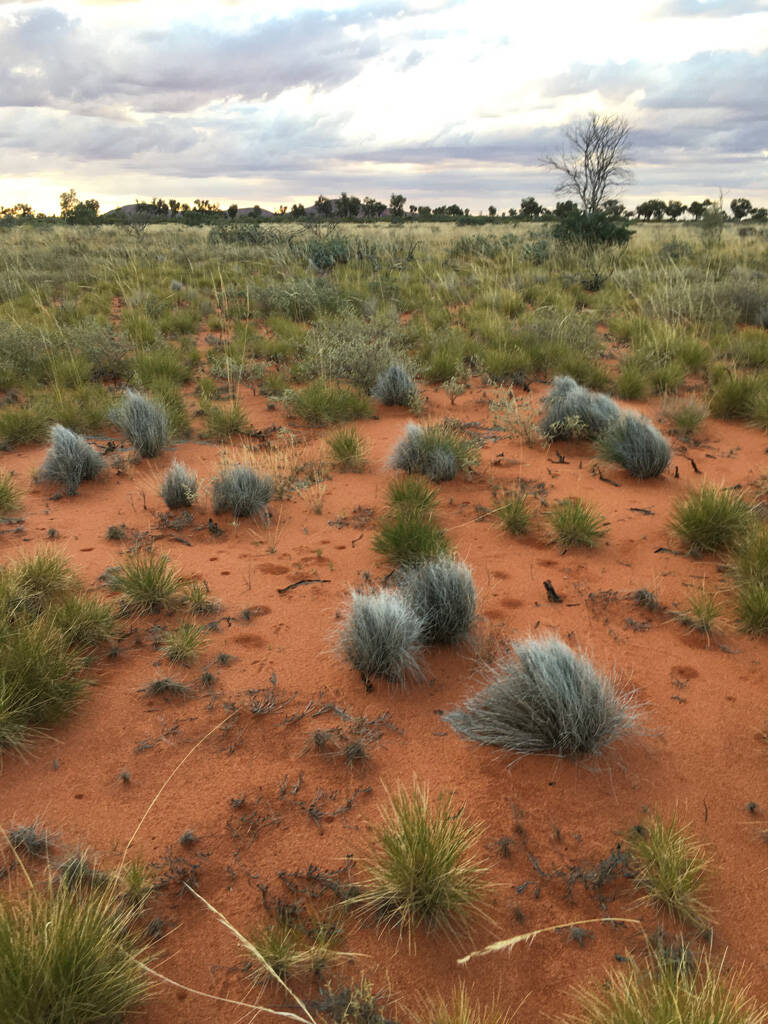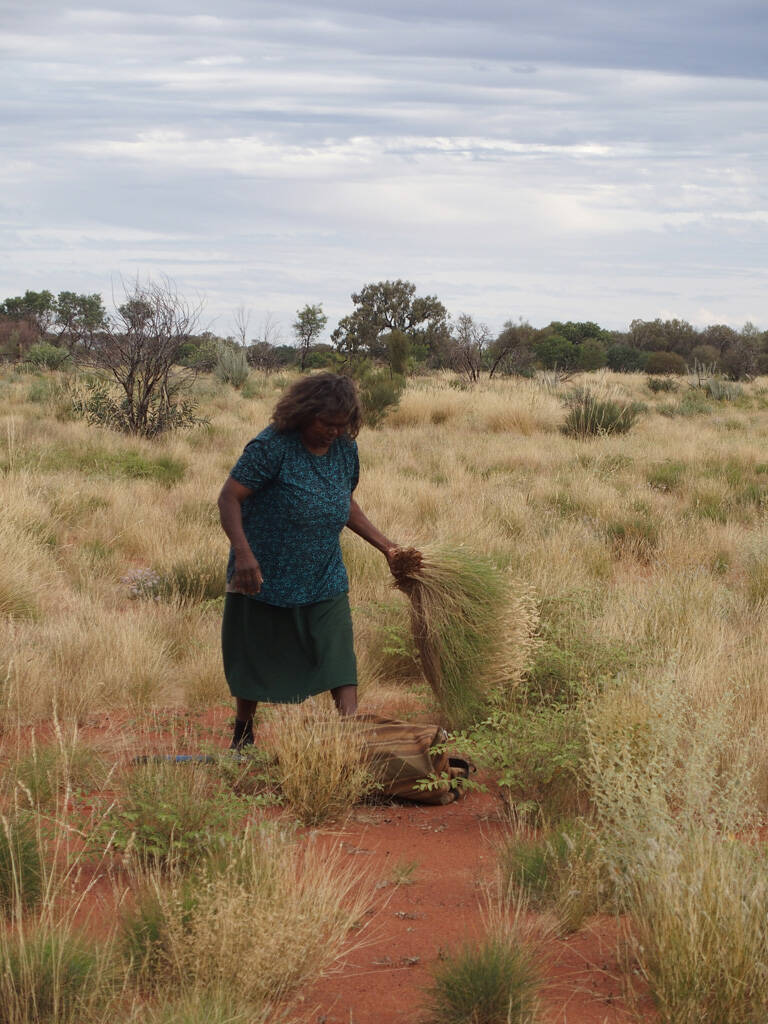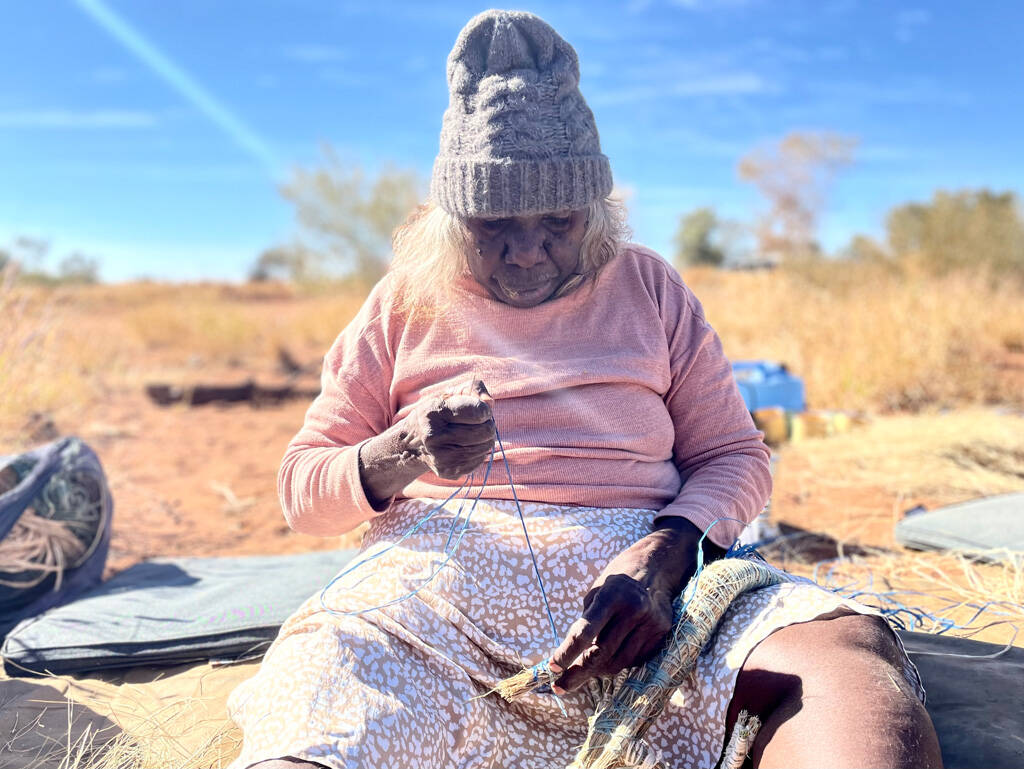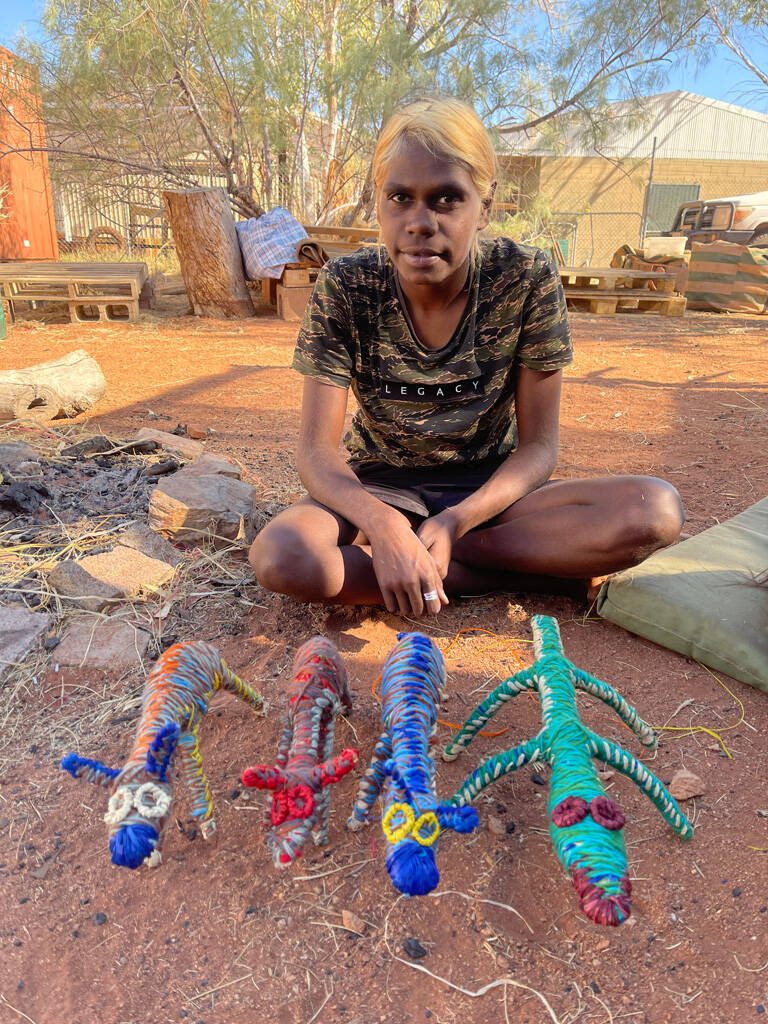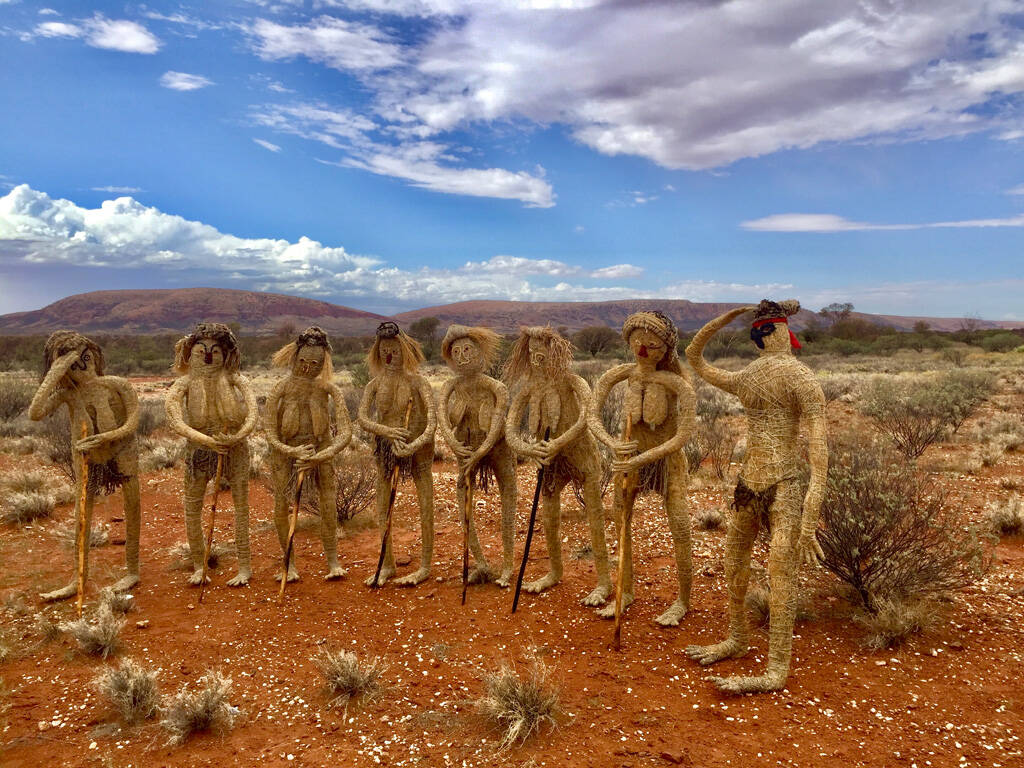The Gallery is excited to launch the exhibition Ever Present: First Peoples Art of Australia on Saturday 29 July. To coincide with this exhibition, a selection of spectacular woven baskets made by the Tjanpi Desert Weavers are available to purchase from the Gallery shop, in store and online.
---------------------------------------------------------------------------
Tjanpi Desert Weavers is a First Peoples social enterprise of the Ngaanyatjarra Pitjantjatjara Yankunytjatjara Women’s Council (NPYWC). Ngaanyatjarra Pitjantjatjara Yankunytjatjara lands span approximately 350,000 square kilometres in the central desert region of Northern Territory, South Australia and Western Australia.
Tjanpi (meaning grass in Pitjantjatjara language) began as an answer to the call of NPYWC members for more sustainable, culturally appropriate employment opportunities. In 1995, NPYWC member Thisbe Purich taught a group of local women to make woven basketry using tjanpi, a local grass, as the base. Facilitating the workshop over an afternoon, Purich initially thought the experiment had failed when the women instead made manguri, traditional hair rings used to carry objects on the head. A few days later, however, baskets appeared, growing out of the coiled bases of these traditional forms. From the outset, the Tjanpi weaving practice was a hybrid of existing and new methods.
Since then, Tjanpi has grown to encompass the contemporary fibre art and communal practice of over 400 Aṉangu/Yarnangu women artists from 26 remote Communities.[1] Tjanpi artists continue to use native grasses with seeds, feathers, commercially bought raffia (often dyed with native plants), string and colourful wool to weave large-scale collaborative fibre installations. From baskets to life-size figures of animals, people and objects, these works share their makers’ lore and scenes of daily living.
